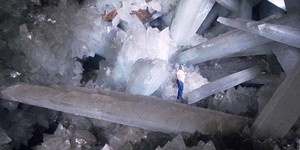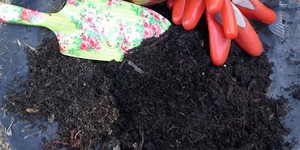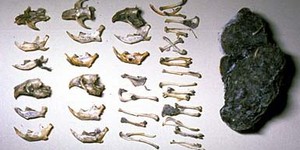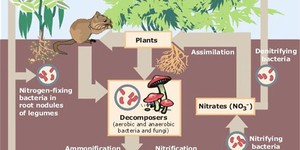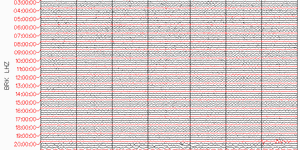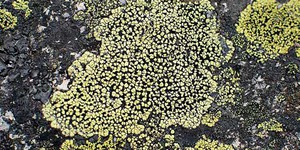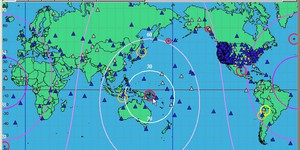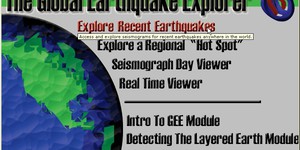Geology Science Projects (43 results)
Geologists study the Earth, trying to understand the forces that gradually shape and change the landscape and ocean floor, as well as forces that make themselves felt more suddenly, like earthquakes and volcanoes. The information geologist discover helps in many ways, from keeping populations safe from disasters like landslides to uncovering important ore deposits like titanium used for surgical equipment.
|
Select a resource
Sort by
|
Caves have been used for much more than just exploring throughout Earth's history. Caves have been used for shelter, for religious purposes, and for burial sites. They were even used for food storage, before refrigeration, because they are cool and have constant high humidity. But how are caves formed? What causes those fantastic formations in caves? How do cave formations change as you go deeper in the cave? Get ready for an adventure as you visit a local cave and learn more in this science…
Read more
Featured
Have you heard that garlic powder is supposed to inhibit the growth of bacteria? Which do you think would make a better disinfectant: a solution of garlic powder or a solution of bleach? This project shows you a straightforward way to compare the effectiveness of different disinfectants (or other antimicrobial agents), by measuring zones of inhibition on a culture plate.
Read more
You can study hazards that affect coastal areas. What geological forces cause a tsunami? A tsunami (Japanese for 'harbor wave') is a wave generated by an undersea earthquake, landslip, or volcanic eruption. You can demonstrate what causes a tsunami by simulating an undersea earthquake with a water table. How does the depth of water effect the height of the wave? Do different slopes of bottom change the speed of the wave? Visit the USGS Coastal and Marine Geology Program to find out about…
Read more
Make your own fertile soil using kitchen scraps, manure, leaves, grass clippings, and other compostable materials. Which materials make the best compost? How does the amount of nitrogen change the rate at which the compost forms? How does a 'hot' compost pile compare to a 'cold' compost pile, or how does traditional composting compare to worm composting, or vermiculture?
Figure 1. Different composting methods yield different soils. In this picture, the soil on the…
Read more
What is geomagnetism, and how does it affect the earth? Visit the USGS Geomagnetism program for more information about this invisible force (USGS, 2006). How is the earth's magnetic field patterned? Are the magnetic poles located at the exact North and South Pole? How can the fields be mapped on the Earth's surface? What is declination? Use the mapping tools to study changes in declination patterns over time. (USGS, 2006)
Read more
Are you fascinated by dinosaurs, fossilized bones, and fossilized plants? Although this project is not based on actual fossils, you will get good practice at reconstructing an animal's skeleton from individual bones. You'll use what you find to identify the types of prey that owls consume.
Read more
Everything on our planet is connected together, linked by a giant recycling system called the biogeochemical cycle. It is an amazing process. You can actually investigate how our planet recycles and reuses everything needed to support life by making a small model of the biosphere. What will be important to include in your miniature system so that it can support different types of life?
Read more
Have you ever wondered how fast a seismic wave from an earthquake travels? In this geology science project you can figure this out using historical seismograph data that you can collect from the comfort of your own computer. You will use a web interface to a network of seismometers run by the Northern California Earthquake Data Center, at the University of California, Berkeley. From the seismograms you make, you will be able to measure the time it took for the seismic waves to travel from the…
Read more
Have you ever noticed an old stone wall and wondered how long it has been there? If there is lichen growing on the wall, the lichen has most likely been living there since the time the wall was made, so if you could figure out how old the lichen is then you could deduce the age of the wall. Geologies use this method, called lichenometry, and other methods to establish dates and temporal sequences as they seek to construct a history from the available evidence. In this geology science project,…
Read more
When an earthquake happens, how are scientists able to determine the original location of the quake? In this project, you'll use archived data from a global network of seismometers to find out for yourself. You will make your own seismograms using the Global Earthquake Explorer program, and then use the seismograms to determine the location of earthquake epicenters.
Read more
When an earthquake occurs, seismic shock waves travel out through the earth from the source of the event. The shock waves travel through the earth or along the Earth's surface, and can be recorded at remote monitoring stations. Some of the waves that travel through the earth are blocked or refracted by the Earth's liquid core, which means that monitoring stations located certain distances from the earthquake do not detect these waves. This creates a "seismic shadow" that you can use to…
Read more
|
Explore Our Science Videos
Make an LED Night-Light
Build a Simple Electric Motor
Sweet Earthquake Shake- STEM activity

